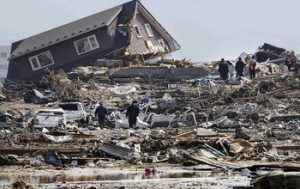Technology is fast changing and ever innovating. This is especially true in the modern, digital world we are living in now. Almost everywhere you look, technology dominates your surroundings and it even rules your life by feeding your smartphone and social media obsession. Almost all brands release new models every year and it is a major factor as to how often people replace their units even if their old one is still functional and has no issues at all. Among the leading tech brands in the world today is Apple. It is the smart technology innovator and the maker of the luxury smartphone brand, the iPhone, that is coveted by many.
 Apple launches the new iPhone 8 this month and the Apple Event kicked off this week. People are already salivating at its new model and won’t likely hesitate to part with their hard-earned money just to be able to enjoy this new piece of technology. Its makers even dubbed it as the “the new step forward for iPhone”. With better features that boast of wireless charging, made of the most durable glass, augmented-reality ready calibrated camera, a home-less phone (say goodbye to the home button), and the smartest and powerful all-bionic chip available today, it sure is to sell like hot pancakes especially among loyal iPhone users.
Apple launches the new iPhone 8 this month and the Apple Event kicked off this week. People are already salivating at its new model and won’t likely hesitate to part with their hard-earned money just to be able to enjoy this new piece of technology. Its makers even dubbed it as the “the new step forward for iPhone”. With better features that boast of wireless charging, made of the most durable glass, augmented-reality ready calibrated camera, a home-less phone (say goodbye to the home button), and the smartest and powerful all-bionic chip available today, it sure is to sell like hot pancakes especially among loyal iPhone users.
CUPERTINO, Calif.,: Apple Inc Chief Executive Tim Cook took the stage at the Steve Jobs Auditorium on the new Apple campus Tuesday for the company's biggest product launch in years, which included a completely redesigned top-of-the-line iPhone.
Cook unveiled two new iPhone 8 models, with a new glass-body design and other improvements on the iconic smartphone.
Apple chief executive Cook told a media event that the new handsets, the iPhone 8 and larger iPhone 8 Plus, represent "a huge step forward" for the California tech giant, which is marking the 10th anniversary of the iPhone.
The Apple executive opened the event, where the company is also expected to roll out two other new phones, with the launch of an upgraded Apple Watch, a higher-definition Apple TV and with a tribute for Jobs, who died in 2011.
Of course, the price is always a consideration when it comes to mind-blowing technology. After all, nothing comes for free or sells cheaply anymore unless it is outdated. And with the latest technology, it comes at a high price too. So, better prepare your wallet if you want to have a taste of what the new iPhone 8 has to offer. If you are someone with the cash to burn, feel free to make the upgrade today but don’t get tempted to spend all your life savings just because you want to stay on trend.
The iPhone X has just introduced a new 3D facial recognition function (dubbed FaceID) which allows users to unlock their phones instantly.
The technology replaces the fingerprint scanner, which will disappear along with the home button in favour of an edge-to-edge display.
The facial scanner will bring another, more light-hearted feature to the iPhone X – Animojis.
Animojis are “custom animated messages that use your voice and reflect your facial expressions”.
Using the 3D sensor, users will be able to map create moving, talking versions of their favourite emojis. Think smiling monkeys, winking unicorns and frowning piles of poo.
Animojis – perhaps will be the newest game-changer in the smartphone technology. As if the specs mentioned above aren’t enough to make you spend all your money on the latest iPhone model, this cute animated emojis are sure to liven up your messaging, chatting and SNS game. And since the majority of the population can’t live without social media, this is the perfect tool to help them convey those emotions they can’t easily express with written words. It won't be hard selling these to most Millennials, then. So, brace yourself for another powerful handheld device that is sure to blow you away as it promised and you won't even have to wait for long.
The article Are You Ready For The New Apple iPhone? Find more on: SEMP.us Blog
source https://www.semp.us/are-you-ready-for-the-new-apple-iphone/





